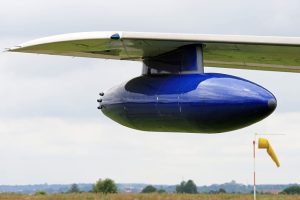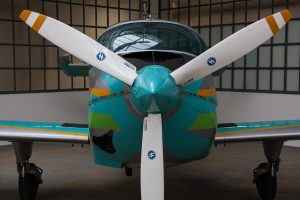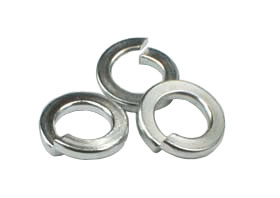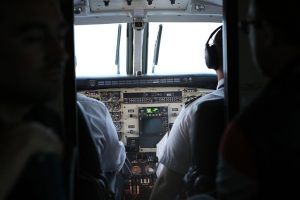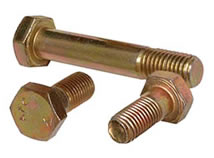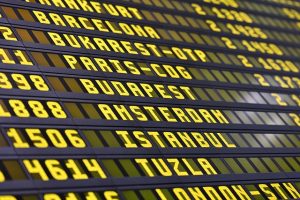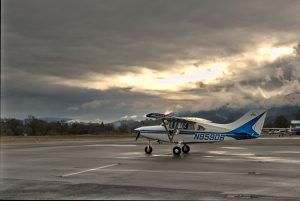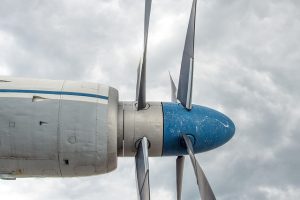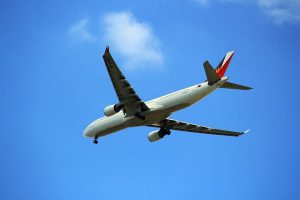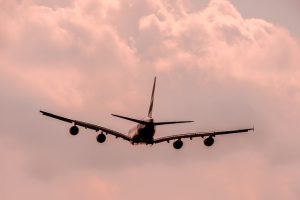
The wings of a typical airplane have a leading edge and a trailing edge. Both of these edges play an important role in the flight dynamics of modern-day airplanes. Most airplanes today don’t have flat, fixed wings. Rather, they have wings with various high-lift devices. Some of these high-lift devices are found on the leading edge of the airplane’s wings, whereas others are found on the trailing edge.
What Is a Leading Edge?
A leading edge is the front part of an airplane’s wings. When flying, the airplane’s leading edge will make contact with the air first.
Not all airplanes have a straight leading edge. Rather, most of them have a curved leading edge. This curvature allows the air to flow over the wings with greater ease, thereby reducing drag and increasing lift.
What Is a Trailing Edge?
A trailing edge is the back part of an airplane’s wings. If you look down on top of an airplane from an aerial perspective, you’ll see the leading edge at the front of the airplane’s wings and the trailing edge at the back.
Like their leading edge counterparts, the primary purpose of a trailing edge is to generate lift and reduce drag. They are designed to control the air as it leaves the airplane’s wings and other surfaces.
Differences Between Leading and Trailing Edges
Leading and trailing edges have different high-lift devices. Trailing edges have flaps, for instance, whereas leading edges have slats. Flaps are adjustable hinge-like surfaces that can be lowered to produce more lift. They’ve been around since the 1930s. Since then, they’ve become an integral part of most airplanes.
Slats are high-lift devices found on the leading edge of an airplane’s wings. Slats are designed to redirect airflow and increase lift. There are full-span slats that encompass the entire length of the wings, and there are smaller slats that only encompass a small area of the wings.
Leading edges and trailing edges are also shaped differently. As previously mentioned, most airplanes have a curved leading edge. Trailing edges, in comparison, typically feature a triangle or cusp shape.
Tabs are exclusive to trailing edges. There are several different types of tabs that airplanes use, some of which include trim tabs, servo tabs and anti-servo tabs. You won’t find these surfaces on leading edges. Rather, tabs are only found on trailing edges.
The easiest way to distinguish between leading and trailing edges, of course, is to look at their placement. Leading edges are found on the front of an airplane’s wings, whereas trailing edges are found on the back of an airplane’s wings.
- SEO Powered Content & PR Distribution. Get Amplified Today.
- PlatoData.Network Vertical Generative Ai. Empower Yourself. Access Here.
- PlatoAiStream. Web3 Intelligence. Knowledge Amplified. Access Here.
- PlatoESG. Carbon, CleanTech, Energy, Environment, Solar, Waste Management. Access Here.
- PlatoHealth. Biotech and Clinical Trials Intelligence. Access Here.
- Source: https://monroeaerospace.com/blog/leading-edges-vs-trailing-edges-whats-the-difference/
- :is
- 200
- 300
- a
- adjustable
- AIR
- Airplane
- Airplanes
- All
- allows
- also
- an
- and
- ARE
- AREA
- around
- AS
- At
- back
- BE
- become
- been
- between
- both
- CAN
- comparison
- contact
- control
- counterparts
- course
- Cusp
- designed
- Devices
- difference
- different
- distinguish
- Dont
- down
- dynamics
- ease
- easiest
- Edge
- encompass
- Entire
- Exclusive
- Feature
- Find
- First
- fixed
- flat
- flight
- flow
- flying
- For
- found
- from
- front
- generate
- greater
- Have
- High
- HTTPS
- if
- important
- in
- include
- Increase
- increasing
- instance
- integral
- IT
- jpg
- landing
- leading
- Length
- Look
- lowered
- make
- max-width
- mentioned
- more
- most
- of
- on
- only
- or
- Other
- Others
- over
- part
- perspective
- placement
- plato
- Plato Data Intelligence
- PlatoData
- Play
- previously
- primary
- produce
- purpose
- rather
- redirect
- reduce
- reducing
- Role
- see
- several
- Shape
- shaped
- since
- small
- smaller
- some
- straight
- that
- The
- their
- Them
- then
- There.
- thereby
- These
- they
- this
- to
- today
- top
- types
- typical
- typically
- use
- various
- vs
- Way..
- when
- whereas
- which
- will
- with
- you
- zephyrnet

